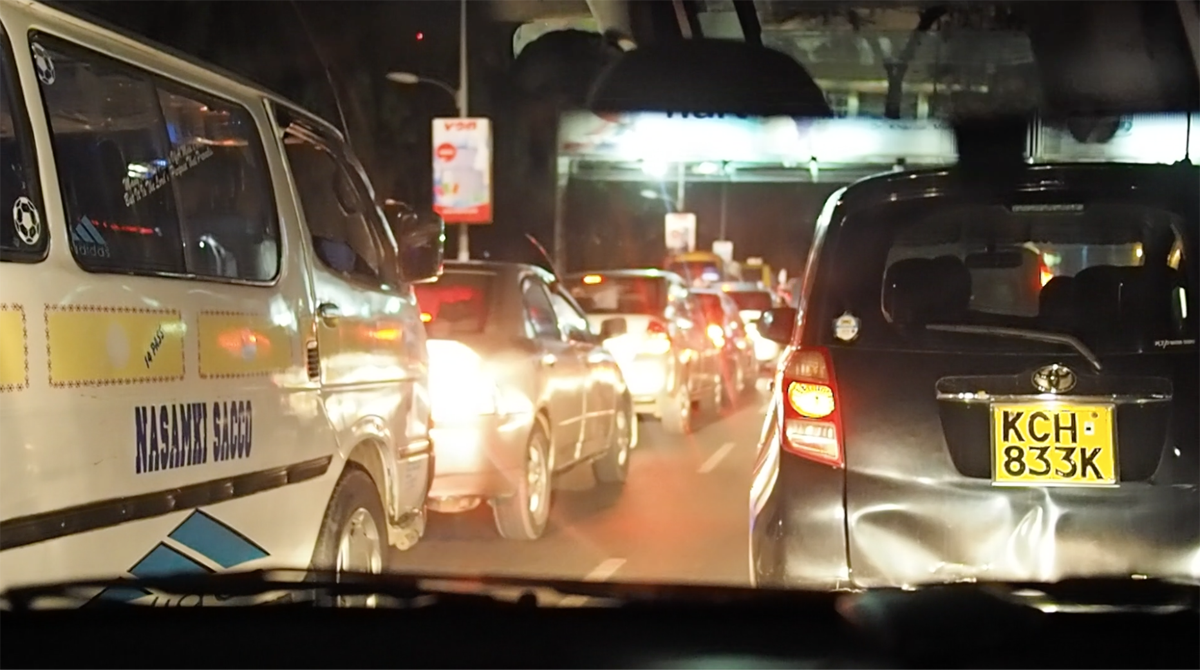A quick note on traffic:
I’m not sure how it’s possible, but there are both more vehicles and more pedestrians in Nairobi than anywhere I’ve ever been. You would think that one would ameliorate the other, but instead the wheeled and walking traffics seem to feed off of each other. It’s as though there’s an assumption that the more cars are crammed together, the more people should be hopping in and out of the road, dodging mirrors, slapping windshields, maybe trying to sell you some bootlegged DVDs or a bag of mangoes.
Sometimes the congestion comes from a lorry stopped dead in the middle of the highway, sometimes from a mismanaged roundabout with laughably ineffectual traffic lights, but most of the time is just the inevitable result of too many cars in too little space. The pedestrians might enter a variety of bus-like contraptions, some more derelict than others, stacked 30 feet high with bags of charcoal or leaving a wake of feathers fluttering to the street from hundreds of live chickens strapped to the roofrack. Each bus or matatu has an individualized paint job, proclaiming in diverse and garish colors that “JESUS NEVER FAILS” or “PITTSBURGH STEELERS” (go figure) or my personal favorite, “HITLER” emblazoned above the windshield. The flow of people to and from these vehicles is so fluid and perpetual that many just drive with the sliding door open, a conductor of sorts leaning out the side barking at oblivious Toyotas and tossing one-liners at passersby.
Rather than the alluring current of interstate headlights that evokes a steady rippling stream, Nairobi feels like the thick, muddy trudging of the Ewaso Ngiro river, sucking in all the detritus and dirt that comes anywhere close. But what’s really unique is the bizarre passivity of it all. Unlike New York City or Manila or New Delhi, there’s no frantic honking or simmering desperation in the gridlock. The citizens have surrendered, the commuters capitulated. Against this great and terrible machine, there is no victory.
Instead, as I look around this vision of dancing red lights–skyscrapers to the my right, Uhuru park to my left, I see amiable Kenyans chatting away in their cars, buying sodas from hawkers, gazing blankly into space. There’s no rush here. Haraka haraka, hakuna baraka. Hurry, hurry, and there is no blessing.
This is the great paradox of Nairobi: a deep calm, almost lethargic, that informs everything from traffic patterns to bureaucratic processes to societal practices. What about the van rumbling past me in the rocky ditch that serves as a shoulder to the already potholed road, you ask? What about the terrifying chaos of an ungoverned intersection? These are but little whirlpools fighting desperately to survive before being absorbed once more into the great dull march of the city.
And because we’ve accepted this paradox, one learns to enjoys it. The three lanes that merge into one with no warning, the jovial drunkard knocking on your window, the pikipikis darting in front of you, borrowing some paint–these things become delightful little idiosyncrasies. You can never make sense of the car-to-street-to-person ratio, so you let it go. You can’t turn down the matatu’s blaring reggae, so you sing along.
We all just sing along.

